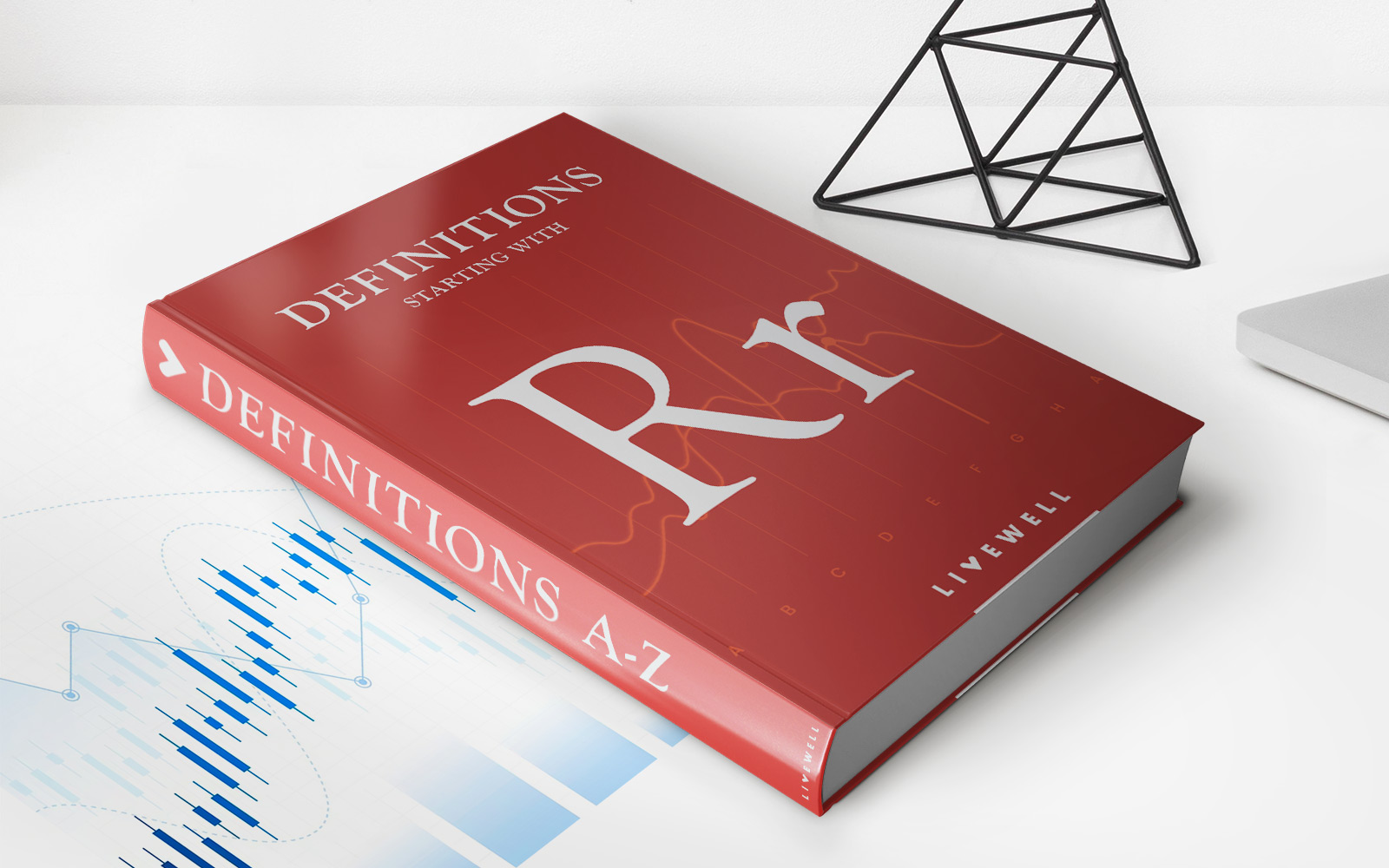

Finance
What Is Equity Accounting
Published: October 8, 2023
Learn about equity accounting in finance and its importance in financial reporting and analysis. Understand how it impacts the valuation of investments and the allocation of profits.
(Many of the links in this article redirect to a specific reviewed product. Your purchase of these products through affiliate links helps to generate commission for LiveWell, at no extra cost. Learn more)
Table of Contents
Introduction
Equity accounting is an important concept in finance and accounting that allows companies to report their investments in other companies. It is a method of accounting used when a company has a significant influence over another company, but not enough control to consolidate its financial statements. Equity accounting enables the investor company to reflect the financial performance and position of its investees in its own financial statements.
Equity accounting provides a way to capture the economic benefits and risks of an investment in another company. It is commonly used in situations where an investor owns less than 50% but has significant influence over the investee’s operations and financial policies. By using equity accounting, the investor can reflect its share of the investee’s profits or losses and the value of its investment on its own financial statements.
The main objective of equity accounting is to accurately represent the investor’s economic interest in the investee. This method allows for a more comprehensive and transparent presentation of a company’s investments, providing investors and analysts with a better understanding of the company’s overall financial performance.
Equity accounting follows a set of principles and guidelines to ensure consistency and accuracy in reporting. These principles dictate how the investment is initially recorded, how the investor accounts for its share of the investee’s profits or losses, and how the investment is valued in the investor’s financial statements.
There are different methods of equity accounting, with the choice depending on the level of influence the investor has over the investee. The most common methods include the equity method and the proportional consolidation method. The equity method is used when the investor has significant influence over the investee, while the proportional consolidation method is used when the investor has joint control over the investee.
Overall, equity accounting is a crucial tool in financial reporting that allows companies to accurately represent their investments in other entities. It provides a fair and transparent view of the investor’s economic interest in the investee, enabling stakeholders to make informed decisions based on a company’s overall financial position.
Definition of Equity Accounting
Equity accounting refers to a method of accounting used by companies to report their investments in other companies. It is an important part of financial reporting that allows the investor company to reflect its share of the investee company’s financial performance and position in its own financial statements.
Under equity accounting, the investor company records its investment in the investee company as an asset on its balance sheet. The investor also recognizes its share of the investee’s profits or losses as an adjustment to the investment account on its balance sheet. This allows the investor to reflect the financial performance of the investee in its own financial statements.
Equity accounting is primarily used when a company has a significant influence over another company, but not enough control to consolidate its financial statements. This typically occurs when the investor company owns between 20% and 50% of the voting power or has the ability to influence the investee’s financial and operating policies.
The main objective of equity accounting is to accurately represent the investor’s economic interest in the investee. It provides a way for the investor to reflect its share of the investee’s profits or losses, as well as any changes in the value of the investment, in its own financial statements. This allows stakeholders to get a more comprehensive and transparent view of the investor’s overall financial performance.
Equity accounting follows certain principles and guidelines to ensure consistency and accuracy in reporting. These include the initial recognition of the investment at cost, the recognition of the investor’s share of the investee’s profits or losses, and the valuation of the investment in the investor’s financial statements.
Overall, equity accounting is a fundamental concept in finance and accounting that allows companies to accurately report their investments in other entities. By using this method, investors can provide a transparent view of their economic interest in the investee, enabling stakeholders to make informed decisions based on a company’s overall financial position.
Purpose of Equity Accounting
The purpose of equity accounting is to provide a comprehensive and transparent representation of an investor company’s investments in other companies. It serves several important purposes in financial reporting and offers benefits to both the investor and the stakeholders:
- Accurate reflection of financial performance: Equity accounting allows the investor company to reflect its share of the investee’s profits or losses in its own financial statements. This ensures that the investor’s financial performance accurately reflects the economic benefits or risks associated with its investment in the investee company.
- Transparent reporting: Equity accounting provides investors, analysts, and other stakeholders with a transparent view of the investor’s economic interest in the investee. It helps stakeholders understand the financial performance, position, and value of the investment, allowing them to make informed decisions about the investor company.
- Consistency: Equity accounting follows a set of principles and guidelines, ensuring consistency in reporting. This consistency in accounting practices helps maintain comparability across different companies and industries.
- Enhanced decision-making: By using equity accounting, investor companies offer stakeholders a more comprehensive view of their financial position. This enables stakeholders to make better-informed decisions regarding their investment in the investor company, assessing the potential impact of the investee’s performance on the overall financial health and stability of the investor.
- Continuous monitoring: Equity accounting allows the investor company to continuously monitor the financial performance of the investee. By recognizing its share of the investee’s profits or losses, the investor can stay updated on the investee’s performance and respond accordingly.
- Compliance with accounting standards: Equity accounting is usually required by accounting standards, such as Generally Accepted Accounting Principles (GAAP) and International Financial Reporting Standards (IFRS). By complying with these standards, investor companies ensure their financial reporting is in line with industry norms and regulations.
In summary, the purpose of equity accounting is to accurately represent the economic interest of an investor company in its investee. It provides transparency, consistency, and reliable information to stakeholders, enabling them to assess the investor’s financial performance, make informed decisions, and have a comprehensive view of the investor’s overall financial position.
Principles of Equity Accounting
Equity accounting follows a set of principles and guidelines to ensure consistency and accuracy in reporting the investor company’s investments in other entities. These principles dictate how the investment is initially recognized, how the investor accounts for its share of the investee’s profits or losses, and how the investment is valued in the investor’s financial statements. The key principles of equity accounting include:
- Initial recognition: The investment in the investee is initially recognized at cost, which includes the purchase price, any transaction costs, and any other directly attributable costs. This ensures that the investor reflects the value of the investment accurately.
- Share of profits or losses: The investor company accounts for its share of the investee’s profits or losses in its financial statements. This is usually done on a proportionate basis based on the investor’s ownership percentage. The investor records its share of profits as an increase in the investment account and its share of losses as a decrease.
- Valuation of the investment: The investment in the investee is typically valued at its initial cost plus the investor’s share of the investee’s post-acquisition profits or losses. Any post-acquisition changes in the investee’s net assets that are not recognized in its profits or losses, such as revaluations, are also considered in the valuation of the investment.
- Recognition of dividends: When the investee distributes dividends to its shareholders, the investor company recognizes its share of the dividends as a reduction in the investment account. This reflects the decrease in the investment’s value resulting from the dividends paid by the investee.
- Ownership threshold: Equity accounting is typically used when the investor company owns between 20% and 50% of the investee’s voting power or has significant influence over the investee’s financial and operating policies. If the investor’s ownership exceeds 50%, it would generally consolidate the investee’s financial statements instead of using equity accounting.
These principles of equity accounting ensure that the investor company accurately represents its economic interest in the investee and provides a fair and transparent view of its investments in the financial statements. By following these principles, companies can maintain consistency in reporting and provide stakeholders with reliable and informative financial information.
Methods of Equity Accounting
Equity accounting offers different methods for reporting investments in other companies, depending on the level of influence the investor company has over the investee. The two most commonly used methods are the equity method and the proportional consolidation method.
Equity Method: The equity method is used when the investor company has significant influence over the investee, typically achieved by owning between 20% and 50% of the voting power or having the ability to influence the investee’s financial and operating policies. Under the equity method, the investor company recognizes its share of the investee’s profits or losses in its own financial statements. It records its initial investment at cost and adjusts the investment account annually based on the investor’s share of the investee’s earnings or losses. The investor reports its share of the investee’s profits as an increase in the investment account and its share of losses as a decrease. The investment is then valued at the initial cost plus or minus the investor’s share of the investee’s post-acquisition earnings or losses.
Proportional Consolidation Method: The proportional consolidation method is used when the investor company has joint control over the investee. Joint control means that the investor company has an equal say in the investee’s financial and operating policies, usually achieved through a formal agreement. With the proportional consolidation method, the investor company combines its financial statements with those of the investee in proportion to the investor’s ownership percentage. This method allows for a more comprehensive consolidation of the investee’s assets, liabilities, revenues, and expenses, reflecting the joint control arrangement between the investor and the investee.
Other less commonly used methods include the modified equity method and the fair value through profit or loss method. The modified equity method is a variation of the equity method that allows for a more simplified recognition of the investor’s share of the investee’s profits or losses. The fair value through profit or loss method is used when the investor company holds the investment primarily for trading purposes and aims to capture changes in the investment’s fair value directly in its profit or loss statement.
Each method of equity accounting has its own advantages and limitations, and the choice of method depends on the specific circumstances of the investor company’s relationship with the investee. Regardless of the method used, equity accounting provides a way for the investor to reflect its economic interest in the investee, enhancing transparency and providing stakeholders with valuable information about the investor’s investments in other entities.
Examples of Equity Accounting
To better understand how equity accounting is applied in practice, let’s consider a couple of examples:
Example 1: Company A and Company B
Company A purchases a 30% stake in Company B, giving it significant influence over Company B’s operations and financial policies. Company A decides to use the equity method for accounting for its investment in Company B.
In this case, Company A initially records the investment at its cost, which is the amount paid to acquire the 30% stake in Company B. Company A’s investment account is increased by this initial cost.
At the end of the year, Company B reports a net profit of $1 million. As Company A holds a 30% stake, it recognizes its share of the profit, which is $300,000 ($1 million x 30%). It records this amount as an increase in its investment account.
Similarly, if Company B reports a net loss of $500,000, Company A would recognize its share of the loss, which is $150,000 ($500,000 x 30%). Company A would record this as a decrease in its investment account.
The investment account on Company A’s balance sheet represents the value of its investment in Company B and is adjusted annually based on Company B’s performance.
Example 2: Joint Venture between Company X and Company Y
Company X and Company Y decide to form a joint venture, with each company having equal control over the operations and financial policies of the venture. They choose to use the proportional consolidation method for accounting purposes.
Under the proportional consolidation method, Company X and Company Y will combine their financial statements in proportions that represent their ownership percentages in the joint venture.
For example, if Company X owns 60% of the joint venture and Company Y owns 40%, the financial statements of the joint venture will be consolidated in a 60:40 ratio between Company X and Company Y.
This consolidation includes combining the assets, liabilities, revenues, and expenses of the joint venture with those of Company X and Company Y in proportion to their ownership percentages.
The proportional consolidation method provides a comprehensive view of the financial position and performance of the joint venture and allows both Company X and Company Y to account for their share of the joint venture’s activities.
These examples illustrate how equity accounting is used to report investments in other companies and joint ventures. By employing the appropriate method, companies can accurately reflect their economic interest and provide stakeholders with transparent and informative financial information.
Advantages of Equity Accounting
Equity accounting offers several advantages for companies reporting their investments in other entities. It allows for a more comprehensive and transparent representation of the investor’s economic interest and provides valuable information to stakeholders. Some key advantages of equity accounting include:
- Reflects the investor’s economic interest: Equity accounting ensures that the investor company accurately represents its share of the investee’s financial performance and position in its own financial statements. This allows stakeholders to have a better understanding of the investor’s overall financial health and the impact of the investment on its performance.
- Improves transparency: By utilizing equity accounting, companies can provide stakeholders with a more transparent view of their investments. This includes reporting the investor’s share of the investee’s profits or losses, changes in the value of the investment, and any dividends received. Such transparency helps stakeholders assess the investor’s exposure to risks and the potential impact of the investee’s performance on the investor’s financial position.
- Enhances comparability: Equity accounting follows a set of principles and guidelines that promote consistency in reporting across companies and industries. This enhances comparability between different investments and allows stakeholders to analyze and compare the financial performance of investor companies more effectively.
- Provides more comprehensive information: Equity accounting allows companies to capture a broader range of information about their investments. This includes not only the financial results but also non-profit measures such as ownership changes, fair value adjustments, and any contributions made by the investee. This comprehensive picture aids stakeholders in evaluating the long-term prospects and potential risks associated with the investment.
- Facilitates continuous monitoring of investments: Equity accounting enables companies to track and evaluate the performance of their investments over time. By recognizing their share of the investee’s profits or losses, companies gain insights into the investee’s financial health, operational efficiency, and strategic decision-making. This allows for proactive monitoring and timely adjustments to the investment strategy.
- Compliance with accounting standards: Equity accounting is generally required by accounting standards, such as Generally Accepted Accounting Principles (GAAP) or International Financial Reporting Standards (IFRS). Complying with these standards ensures consistency and accuracy in financial reporting, enhancing the credibility and reliability of the reported information.
Overall, equity accounting provides numerous benefits for companies and stakeholders alike. It improves transparency, comparability, and the understanding of the investor’s economic interest in the investee. By utilizing equity accounting, companies can effectively communicate the financial impact of their investments to stakeholders, enabling more informed decision-making.
Disadvantages of Equity Accounting
While equity accounting has many benefits, it also comes with certain disadvantages that companies should be aware of when reporting their investments. These disadvantages include:
- Complexity: Equity accounting can be more complex and challenging compared to other accounting methods. It requires careful consideration of the investor’s level of influence, the reporting requirements, and the appropriate method to use. This complexity can increase the time and resources needed for accurate and reliable reporting.
- Subjectivity in valuation: Valuing an investment under equity accounting relies on estimates and assumptions. The fair value of the investee and the investor’s share of post-acquisition profits or losses may require judgement calls, which can introduce subjectivity and potential differences in valuation among companies.
- Limited control in decision-making: While equity accounting allows companies to reflect their economic interest, it does not provide control over the operations and policies of the investee. This lack of control can limit the investor’s ability to influence important decisions and may result in a misalignment of objectives between the investor and the investee.
- Delayed recognition of performance: Under equity accounting, the investor recognizes its share of the investee’s profits or losses in its financial statements. This means that the investor’s financial performance may not immediately reflect the investee’s performance. As a result, changes in the investee’s financial condition may not be fully captured in the investor’s financial statements until the next reporting period.
- Potential volatility in financial statements: Depending on the investee’s performance, equity accounting can introduce volatility into the investor’s financial statements. Fluctuations in the investee’s profits or losses can impact the value of the investment and, consequently, the investor’s financial results. This volatility can complicate the analysis and interpretation of the investor’s financial performance.
- Limitations in consolidation: Equity accounting is typically used when the investor’s ownership is between 20% and 50%. If the investor’s ownership exceeds 50%, it would generally consolidate the investee’s financial statements instead of using equity accounting. This limitation may prevent a more comprehensive consolidation of the investee’s financials, potentially impacting the accuracy and completeness of the reported financial information.
- Potential for misinterpretation: Stakeholders may misinterpret the investor’s level of control and influence over the investee when equity accounting is used. Investors need to be cautious and ensure that the relevant disclosures accompanying the financial statements adequately communicate the investor’s rights and level of involvement in the investee’s operations.
While the disadvantages of equity accounting should be considered, they do not negate the benefits it offers. It is crucial for companies to carefully evaluate their specific circumstances, including the degree of influence and control over the investee, before deciding on the most appropriate method of accounting for their investments.
Comparison with Other Accounting Methods
Equity accounting is just one of several accounting methods used to report investments in other entities. Comparing equity accounting with other methods helps companies determine the most suitable approach based on their specific circumstances. Let’s explore how equity accounting compares with other commonly used accounting methods for investments:
- Consolidation: Unlike equity accounting, which is used when the investor has significant influence but not control, consolidation is applied when the investor has control over the investee. Consolidation involves combining the financial statements of the investor and the investee into a single set of consolidated financial statements. This method provides a more complete and integrated view of the investor’s financial position, incorporating all the assets, liabilities, revenues, and expenses of the investee. Consolidation reflects a higher level of control and ownership and is typically used when the investor owns more than 50% of the voting power in the investee.
- Cost method: The cost method, also known as the historical cost method, is a simple and straightforward accounting method. Under the cost method, the investment is initially recorded at its cost and subsequently adjusted for any changes due to dividends received or the sale of the investment. The cost method does not recognize the investor’s share of the investee’s profits or losses. This method is typically used when the investor does not have significant influence over the investee’s operations and financial policies.
- Fair value method: The fair value method involves revaluing the investment at its fair value at each reporting date. Any changes in the fair value are recognized in the investor’s financial statements. This method provides more up-to-date and market-oriented information about the investment’s value. However, it can introduce volatility into the financial statements, reflecting changes in the market value of the investment rather than the underlying performance of the investee.
- Proportional consolidation: Proportional consolidation is used when the investor has joint control over the investee and reflects the investor’s proportional share of the investee’s assets, liabilities, revenues, and expenses. This method combines the financial statements of the investor and the investee in proportion to their ownership interests. Proportional consolidation provides a more comprehensive reflection of the joint control arrangement between the parties involved.
Each accounting method has its own advantages and considerations. Equity accounting is suitable for situations where the investor has significant influence but not control over the investee. It allows the investor to reflect its economic interest and capture its share of the investee’s profits or losses. Consolidation is appropriate when the investor has control over the investee, providing a complete representation of the financials. The cost method is simpler and used when the investor has no significant influence, while the fair value method provides more real-time valuation information.
Companies must carefully consider the nature of their relationship with the investee, the level of influence, and the desired level of financial reporting transparency and comparability before choosing the most appropriate accounting method.
Conclusion
Equity accounting is a crucial concept in finance and accounting that allows companies to report their investments in other entities. It provides a comprehensive and transparent representation of the investor’s economic interest in the investee, reflecting the investor’s share of the investee’s financial performance and position in its own financial statements.
By using equity accounting, companies can accurately reflect their investments in other companies, providing stakeholders with valuable information about the investor’s financial health, performance, and exposure to risks. It enhances transparency, comparability, and decision-making by offering a clear view of the investor’s economic interest, ownership rights, and level of influence over the investee company.
Equity accounting follows a set of principles and guidelines, ensuring consistency and accuracy in reporting. It requires careful consideration of the level of influence, appropriate method selection, and valuation processes to provide reliable financial information.
While equity accounting has several advantages, such as accurate reflection of economic interest and transparency, it also has limitations and potential complexities, including potential subjectivity in valuation and limited control over investee operations.
Furthermore, companies have various accounting methods to choose from, including consolidation, cost method, fair value method, and proportional consolidation. Selection of the appropriate accounting method depends on factors such as the degree of control, level of influence, and desired level of reporting transparency.
In conclusion, equity accounting is a vital tool for financial reporting, enabling companies to account for their investments in other entities accurately. It plays a pivotal role in providing stakeholders with a comprehensive understanding of the investor’s economic interest and optimizing decision-making regarding investments.














